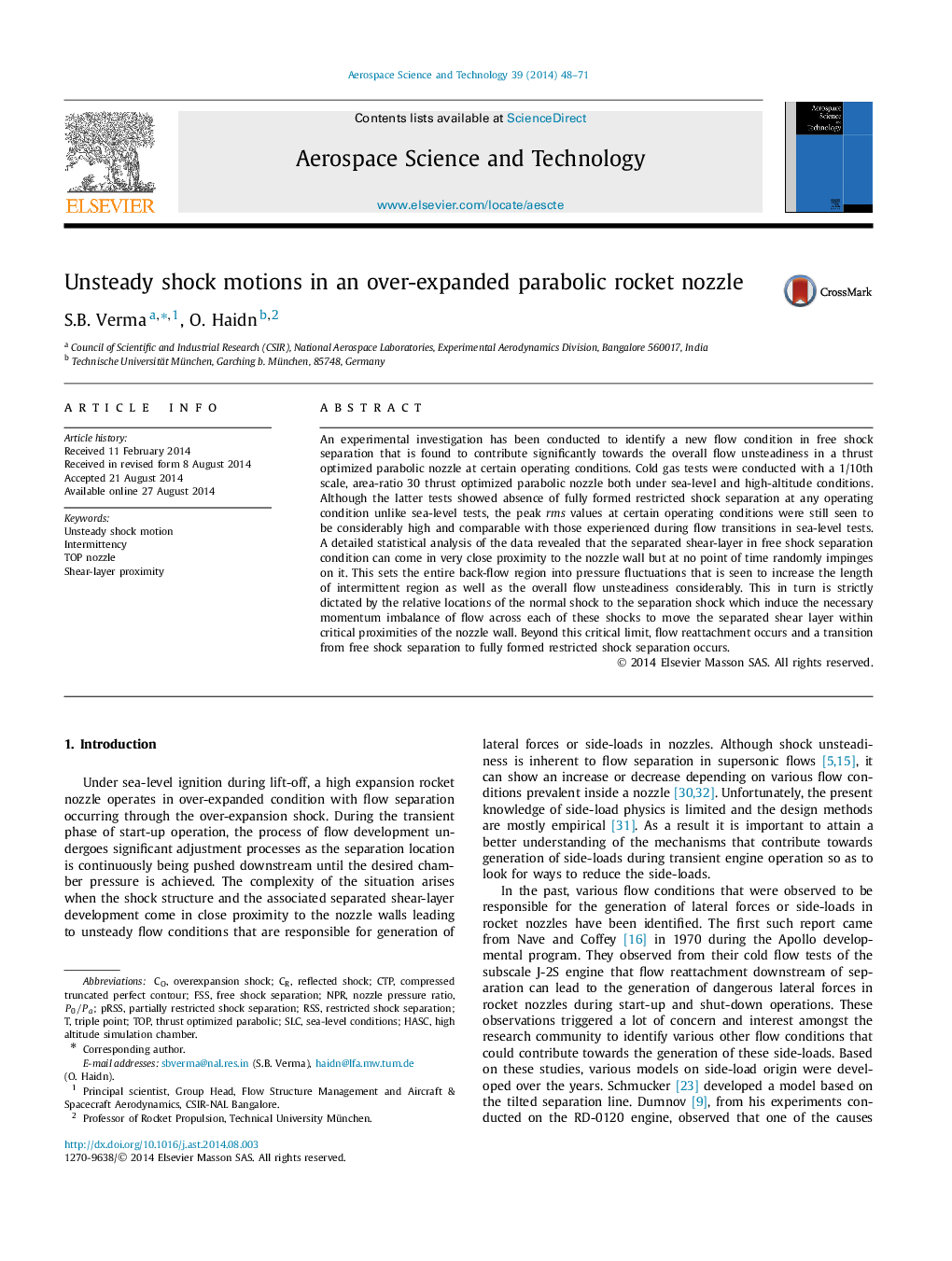| Article ID | Journal | Published Year | Pages | File Type |
|---|---|---|---|---|
| 1717958 | Aerospace Science and Technology | 2014 | 24 Pages |
An experimental investigation has been conducted to identify a new flow condition in free shock separation that is found to contribute significantly towards the overall flow unsteadiness in a thrust optimized parabolic nozzle at certain operating conditions. Cold gas tests were conducted with a 1/10th scale, area-ratio 30 thrust optimized parabolic nozzle both under sea-level and high-altitude conditions. Although the latter tests showed absence of fully formed restricted shock separation at any operating condition unlike sea-level tests, the peak rms values at certain operating conditions were still seen to be considerably high and comparable with those experienced during flow transitions in sea-level tests. A detailed statistical analysis of the data revealed that the separated shear-layer in free shock separation condition can come in very close proximity to the nozzle wall but at no point of time randomly impinges on it. This sets the entire back-flow region into pressure fluctuations that is seen to increase the length of intermittent region as well as the overall flow unsteadiness considerably. This in turn is strictly dictated by the relative locations of the normal shock to the separation shock which induce the necessary momentum imbalance of flow across each of these shocks to move the separated shear layer within critical proximities of the nozzle wall. Beyond this critical limit, flow reattachment occurs and a transition from free shock separation to fully formed restricted shock separation occurs.
